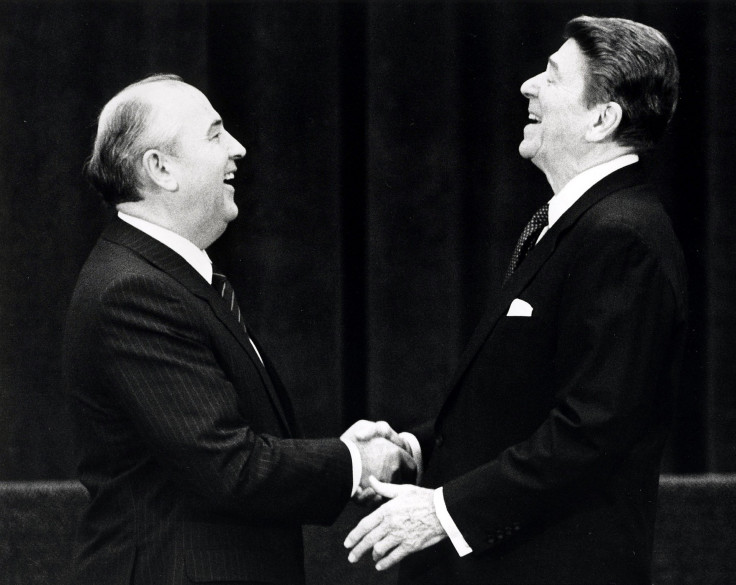Ronald Reagan's Speech Patterns May Reveal Early Signs Of Alzheimer's Disease

Toward the end of his presidency, Ronald Reagan, once famed as “The Great Communicator,” began losing the luster on his oratory prowess. In November of 1994, five years out of office, doctors diagnosed him with Alzheimer’s disease. A new analysis suggests the signs may have been evident even before he left the White House.
The findings hail from Arizona State University and are published in the Journal of Alzheimer’s Disease. They give credence to a method of disease detection that relies on analyzing speech patterns for irregularities, such as the repetition of certain phrases or forgetting them altogether. Alzheimer’s disease carries no reliable diagnostic tool, as scientists have yet to find a way to unlock the so far impenetrable black box of the brain.
As a window into dementia, speech analysis can be tricky. Decades of recorded words aren’t usually lying around, waiting to be fed through a computer. But politicians, in their years of documented campaigning and national addresses, can act as a helpful outlier.
In their analysis, Visar Berisha and Julie Liss, professors of speech and hearing science at ASU, compared Reagan’s transcripts to those of President George H.W. Bush. The two men acted as a reliable comparison for analyzing speech because they were around the same age during their presidency and served in the same decade. This proximity was important for Berisha and Liss because people speak differently across various time periods and at different stages in life.
In parsing both presidents’ many transcripts, they discovered some key differences. Compared to Bush, who has exhibited no signs of dementia, Reagan began relying on crutch words more often toward the end of his presidency, such as using the word “thing” instead of a more specific term. He also repeated himself more often, the researchers found.
Berisha and Liss got the idea for their study after coming across a study that analyzed autobiographical essays of nuns living in a convent, some of whom developed Alzheimer’s and tended to project the signs in their writing. “It was surprising that, by analyzing discourse rather than writing samples, similar changes were detectable over the course of two presidential terms,” Berisha told Yahoo.
Cognitive decline is best caught early. It isn’t a gradual slide into senility so much as a push off of the edge of a cliff. Once the fall has begun, the amyloid plaques destroying neural connections quickly wipe away speech function and mental reasoning. Vocabulary size begins to shrink and known words elude people’s grasp. For Berisha and Liss, the hope is these kinds of detection methods can apply to the general public. They want to devise a study that can record conversations between physicians and patients to analyze speech patterns over time. They also want to study NFL press conferences among players who have suffered head trauma.
“Our goal,” Berisha told Yahoo, “is that one day we can develop health applications that automatically analyze speech and language biomarkers for disease onset or progression.”
Source: Berisha V, Wang S, LaCross A, Liss J. Tracking Discourse Complexity Preceding Alzheimer's Disease Diagnosis: A Case Study Comparing the Press Conferences of Presidents Ronald Reagan and George Herbert Walker Bush. Journal of Alzheimer’s Disease. 2015.



























